Ethnically and culturally, Yemen can be divided into three main groups: the mountain people or tribal people from the North, the coastal people from the West and South and then the Bedouins. In this article I will focus on the first two groups, as they dominate Yemen culture.
How the Yemenis dress depends mainly on two aspects: the region from where they come and the occasion. Islam does not really determine what to wear in Yemen, but it does impose certain limitations on the form of clothing.
I am walking through Sana’a and can’t believe my eyes. Does this still exist – lots of men in white dresses wearing daggers?
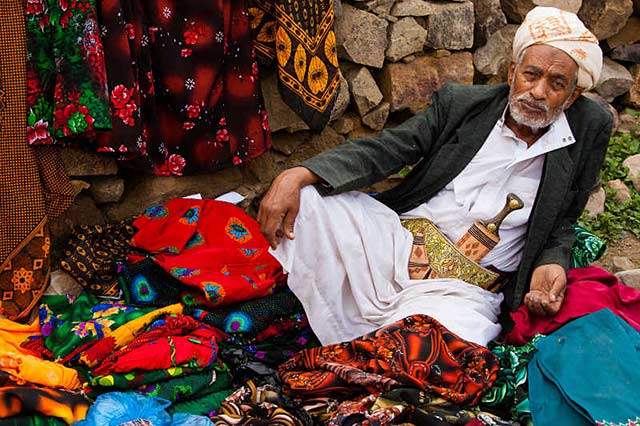
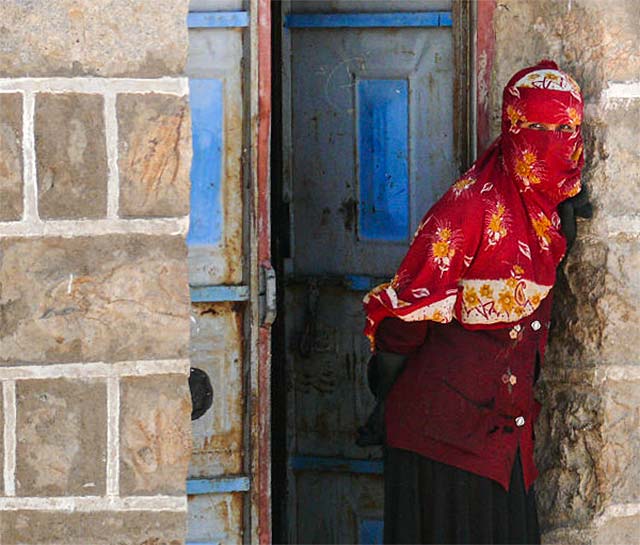
The Men of Yemen
I had read about the customs and clothing, but was amazed by the numbers of men still wearing traditional thoobs and daggers. Since I now live in Yemen, I’ve come to not only know the customs and traditions, but also see that there are several variations in clothing worn by the Yemeni men.
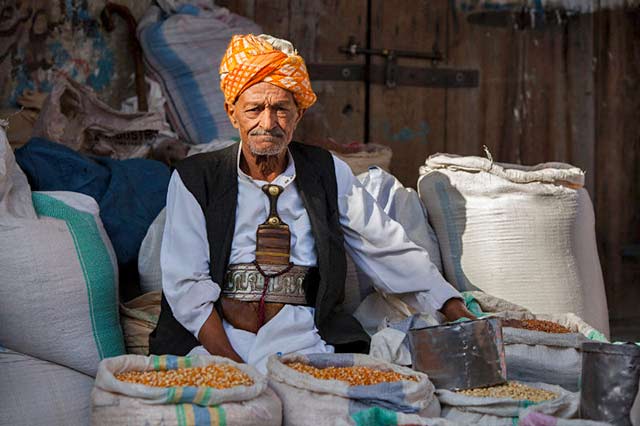
A tribesman at a market.
Traditionally, in the north, men wear a long white dress called a thoob. It is usually white, but other colors are worn as well, such as black, light blue or natural shades. There are lots of different types of models, from full and flowing to very tight. Some thoobs are also covered with embroidered patterns.
Many men wear shawls wrapped around their heads or about the shoulders (a meshedda – though the word shawl is more commonly used). There are specific ways of wrapping it according to specific regions. However, most wear it just as they want it.
On top of the dress is worn a black or dark blue jacket and the famous Yemeni dagger, the jambiyya.
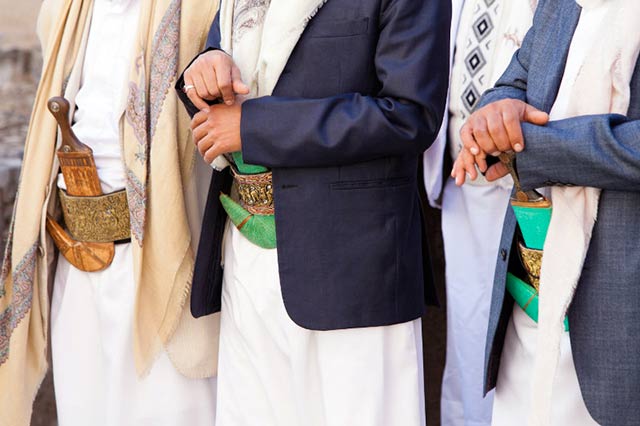
The Yemeni Jambiyya
The jambiyya is the curved knife tucked behind a wide ornamental belt. Every Yemeni tribesman has at least one and wears it often. Although the jambiya serves many purposes, it is mainly a ceremonial dagger. On occasions such as weddings, they are used when dancing.
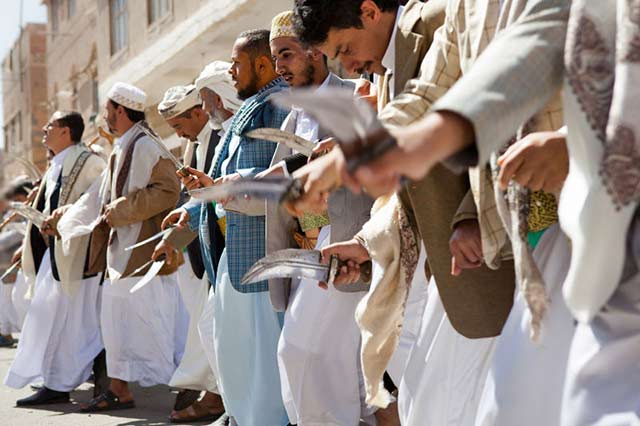
Yemeni men dancing with their daggers at a wedding.
There are loads of cheap jambiyas around that are made in China, but the real expensive ones, which are usually passed on from father to son, give status to a man. I’ve seen jambiyas that are worth tens of thousands of dollars.
The blade is not that special, but the hilt (the handle) is the most important part of the dagger. The less expensive ones are made of plastic or cow horn, while the more expensive ones of ibex horn and the most expensive ones, worn by sheikhs, are made of black rhino ivory.
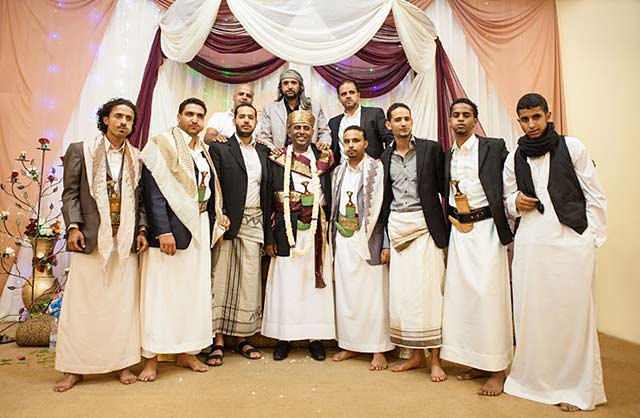
Men wearing thoobs and ma’wazz at a wedding.
In the coastal regions and especially in the eastern provinces, thoobs are rarely seen and if you see one, you can be pretty sure that the man wearing the thoob is a tribesman from the North. In these regions men wear futa’s. These are a kind of wrap-around-skirt. A different version of the futa is the ma’wazz. The ma’wazz is worn less in the coastal areas and more in the mountains as an informal type of dress.
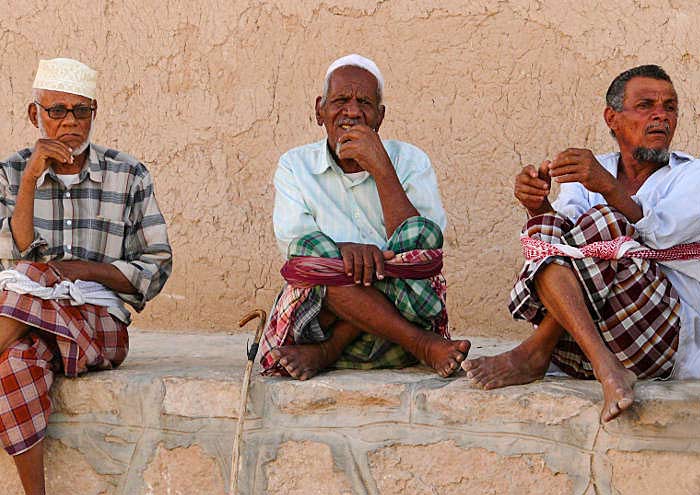
Men wearing futa’s.
Yemen Culture – The Women
In the past women wore lots of different kinds of dresses and headscarves, many of which are very colorful. However, over the past 15 years the black abaya and the black veil have been seen more and more. This black dress is also called balto in Yemen and is worn on top of other clothes. Especially in the cities and larger towns, women wear mostly black. In the villages, other dresses with vibrant headscarves dominate.
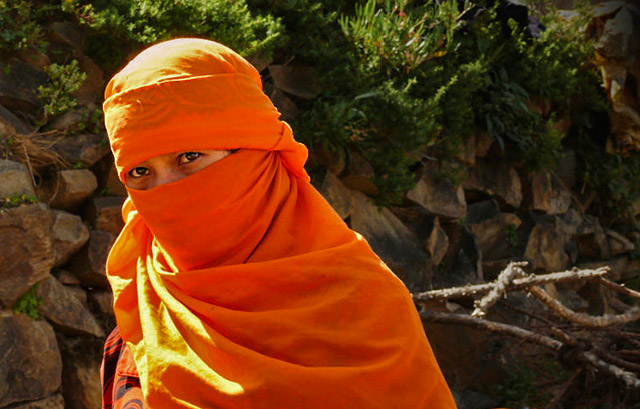
A woman in a nearby village.
Although the hijab, the headscarf, is required by Islam, the veil that covers the face is not. Nonetheless, few women show their face on the streets. The veil is commonly called a burqa, but in Yemen they also call it lithma.
In the west, the hijab and veil raise many arguments, but in the Yemeni society the headscarf is important in protecting the dignity of the women and is worn because of their religious beliefs.
The veil is worn more because of traditional beliefs, but sometimes, it is worn in order to avoid harassment on the streets or because members of their family tell them to do so.
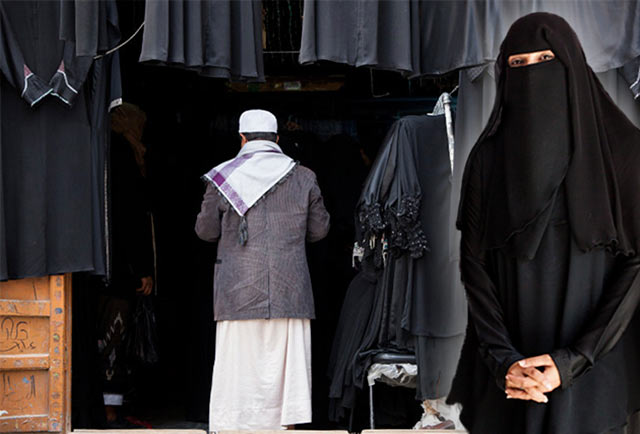
Collage of a man entering a balto shop & a woman wearing a balto.
In Sana’a and its surroundings, older ladies dress differently. They wear the sitara dress. Sitara means both veil and curtain and is basically a large piece of cloth wrapped around the head and body. Originally this piece of cloth had specific patterns in black and red. However, since it has been manufactured in India, more patterns and colors with blue and green have been added.
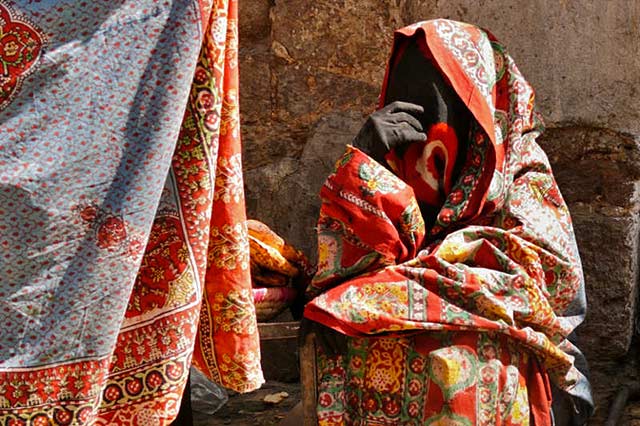
A woman in a sitara at a market.
Western clothing is of course widespread as well, and especially in the cities where modern fashion is very important. Many young men and women wear fashionable clothing to define their individual identities and you will find everything between trendy jeans and smart suits.
On working days most men will wear western style clothing. However, when they relax and chew qat, they tend to wear a ma’wazz or futa. On Fridays and special occasions such as weddings, the thoob is the dress to wear. Because city women wear the black balto outside there is the trend amongst younger women to match the color of their shoes with their bags and their headscarf.
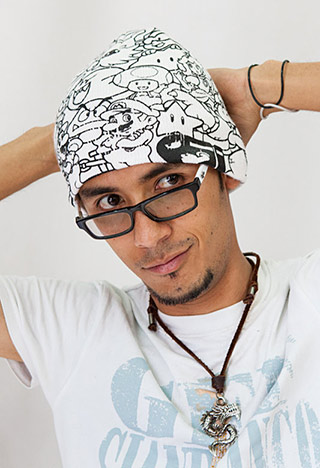
A modern young man from Taiz.
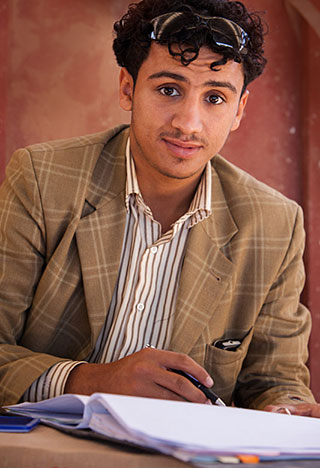
A Yemeni man in modern day clothing.
Today, if you were to visit Yemen and experience the Yemen culture, you would find a mix of traditional and modern clothing styles that are not only in black and white and neutral tones, but in an array of colorful fabrics.
by Maarten de Wolf
All text & photos: © 2013 Maarten de Wolf. All rights reserved.

Leave a Reply